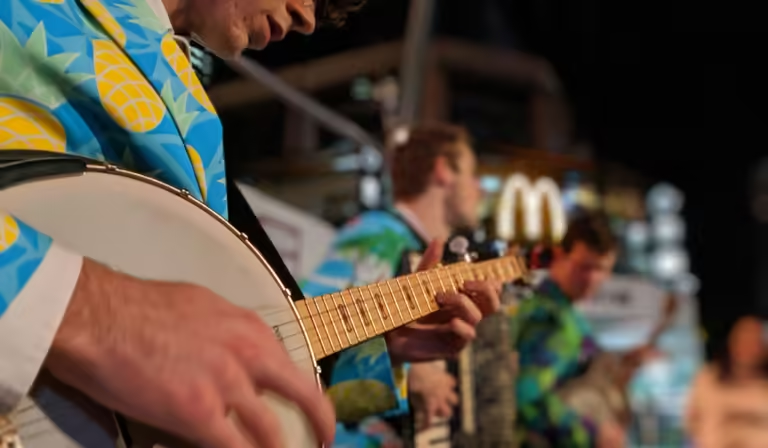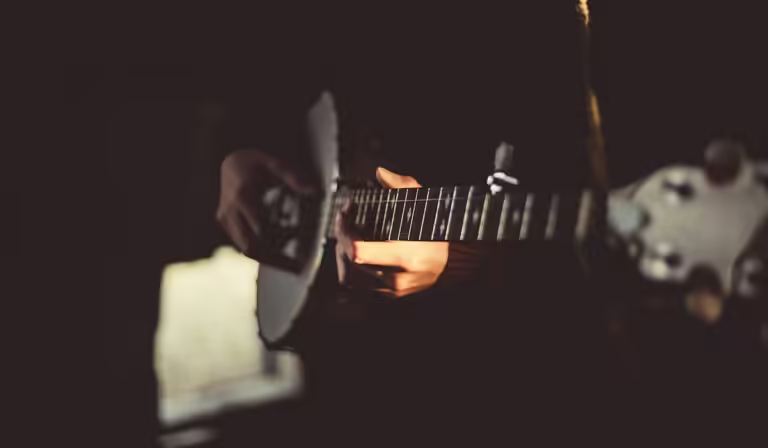Exploring the History of the Banjo (Origins & Evolution)
Origins of the Banjo
The banjo has a rich and diverse history that dates back to Africa, where similar instruments were played for centuries. It is believed that the modern banjo we know today evolved through the transatlantic slave trade, as enslaved Africans brought their musical traditions to the Americas. This fusion of African and European influences resulted in the creation of a unique sound that would become an integral part of American music.
- The banjo’s roots can be traced back to West Africa, where instruments like the akonting and ngoni were played.
- Enslaved Africans in the Americas adapted these instruments and techniques to create what we now recognize as the banjo.
- The banjo’s early popularity can be attributed to its versatility and ability to express a wide range of emotions through music.
Table of Contents
Development of the Banjo in America
In America, the banjo gained significant popularity in the 19th century, particularly through its association with minstrel shows where it was often played by white performers in blackface. Despite this troubling history, the banjo played a crucial role in shaping early American music and culture. As time passed, the banjo found its way into various genres, including bluegrass and folk music, where it became a staple instrument known for its bright and twangy sound.
- The banjo’s association with minstrelsy led to the creation of specific playing styles and techniques that are still used today.
- The instrument’s popularity continued to grow as it became more accessible and affordable to a wider range of musicians.
- The banjo’s presence in American music helped to bridge cultural divides and bring people together through shared musical experiences.
Key Innovations in Banjo Design
Over the years, the banjo has undergone several key innovations that have shaped its sound and playability. From the addition of frets and metal strings to the development of different playing styles, these innovations have contributed to the banjo’s versatility and popularity. Notable banjo players have also made significant contributions to the instrument’s development, pushing the boundaries of what the banjo can achieve musically.
- The introduction of the resonator banjo in the early 20th century revolutionized the instrument’s sound and projection.
- Innovations in banjo construction and materials have led to the creation of lighter, more durable instruments with enhanced tonal qualities.
- Banjo players like Earl Scruggs and Bela Fleck have pioneered new techniques and playing styles that have expanded the possibilities of the instrument.
Modern-Day Banjo
Despite its long and storied history, the banjo remains a popular instrument in contemporary music. It has continued to evolve and adapt to new musical styles, finding its way into genres like rock, jazz, and even hip-hop. The banjo’s unique sound continues to captivate audiences and inspire musicians to explore its potential in new and innovative ways.
- Modern banjo players are experimenting with electronic effects and amplification to create new and exciting sounds.
- The banjo’s versatility allows it to be used in a wide range of musical settings, from traditional bluegrass bands to experimental avant-garde ensembles.
- The instrument’s enduring popularity speaks to its timeless appeal and ability to connect with audiences across generations.
Final Thoughts
In conclusion, the history of the banjo is a testament to the power of cultural exchange and musical innovation. From its African origins to its place in American music history, the banjo has left an indelible mark on the world of music. By exploring the rich tapestry of the banjo’s past, we gain a deeper appreciation for the instrument and the musicians who have helped shape its evolution over the years. The banjo’s legacy continues to resonate with audiences today, inspiring new generations of musicians to carry on its tradition of creativity and expression.
FAQ
1. Where did the banjo originate from?
The banjo has roots in West Africa, where instruments like the akonting and ngoni were played. Enslaved Africans in the Americas adapted these instruments to create the modern banjo we know today.
2. What role did the banjo play in early American music and culture?
Despite its association with minstrel shows, the banjo played a crucial role in shaping early American music and culture. It became popular for its versatility and ability to express a wide range of emotions through music.
3. What are some key innovations in banjo design over the years?
The introduction of the resonator banjo in the early 20th century revolutionized the instrument’s sound. Innovations in construction and materials have led to lighter, more durable instruments with enhanced tonal qualities.
4. How is the banjo used in contemporary music today?
Modern banjo players are experimenting with electronic effects and amplification to create new sounds. The banjo’s versatility allows it to be used in various genres like rock, jazz, and hip-hop, showcasing its enduring popularity and timeless appeal.


